- Registration and welcome coffee from 07.45
- Exhibition open from 09.00 to 18.00
- Lunch: 12.30 - 13.30
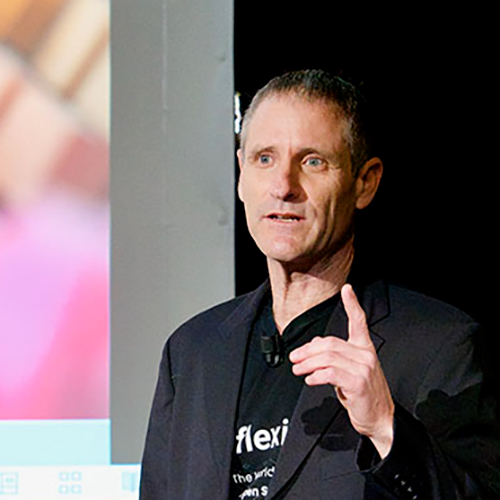
Chairman
Amir Zmora, CEO & Co-founder, flexiWAN
Amir Zmora is CEO & Co-founder of flexiWAN, the world’s first Open Source SD-WAN & SASE. Before starting flexiWAN, Amir was CEO & Co-founder of SwitchRTC, a Real-time, interactive WebRTC based video CDN and B2B/B2C collaboration solution acquired by YouNow. Among his previous positions, Amir was VP Products & Marketing for the Technology Business Unit of RADVISION, an Avaya company.
Describing a system built around Linux using a microservices architecture and open tools so that customers, third parties and our internal teams could innovate quickly and take advantage of advances like Generative AI when they occur.

Michel Ploeg, Product Line Manager, Nokia
Scheduled fabric designs, a staple in modular chassis systems built by networking vendors over the years, are now being adapted to meet the unique requirements of AI/ML networks. Reviewing the evolution of these designs, the existing challenges, and how new technology is tackling them.

Patrice Brissette, Distinguished Engineer, Cisco
Patrice Brissette is a Distinguished Engineer and Lead Architect of EVPN & Service Overlay Technologies at Cisco Systems, specializing in Web and Service Providers port-folio. With 25 years of R&D experience in the telecommunications industry, he has worked with large customers and marketing teams on strategic product development and architectures. He is an active member of IETF and other standards organizations, using his expertise to drive innovation and push the boundaries of the industry.
Applying AI in routing area could achieve route learning performance, network scalability, network O&M efficiency, network reliability, robustness and security. Even enhance collaboration between different network roles for better service experience.

Guofeng Qian, Metro IP Protocol Expert, Huawei Technologies
Guofeng Qian is the Metro IP Protocol expert at Huawei Datacom. He has 22+ years experience in Datacom R&D and Network Solution design. He was the chief architect of metro area network,and also was the chief planner of metro area network. Now he is response for Metro area network protocol planning and innovation , research for the next generation Metro area network architecture and protocol.
Presenting how service providers are turning to AIOps to deliver real-time and predictive insights into network behavior, to optimize provisioning, troubleshooting, and performance management of network services, and ultimately to automate network operations.

John McKinnon, Vice President of Software Engineering, Ciena
John McKinnon currently serves as Vice President of Software Engineering for the Navigator Network Control Suite at Ciena Corporation. In this role, he is responsible for overseeing the design, development, verification, and support of the complete portfolio of Ciena’s SDN network management software solutions, intelligent applications, and network design tools. John has held various senior software design, product management and business development positions in his 40 years tenure at Standard Telecommunications plc, Bell-Northern Research, Nortel Networks and now Ciena. This included software leadership roles in Transmission Networks, Optical Networks, Data Networks and eBusiness product groups covering all aspects of element, network, service management tools and applications. Mr McKinnon holds a Bachelor of Science (Engineering) from University College London, UK and is a Chartered Engineer with the IEE.
Describing the operational challenges around detection of application performance impacting issues, determining the root cause of these issues and resolving them in a large scale virtualized data center environment. Illustrating these challenges with real world examples.

Rahul Aggarwal, Founder & CEO, Augtera Networks
Analyzing the current O&M efficiency pain points, combining the large model, digital twin, automatic closed-loop, and other technologies to build an intelligent virtual network O&M assistant, to help O&M staff in achieving the ultimate goal of active network O&M, rapid self-healing, and lossless service assurance to improve customer experience.

Wu Zhengguang , Marketing Director of NM&Controller, ZTE Corporation
Mr. Wu Zhengguang, graduated from Miami University with a Master Degree, is currently the marketing director of transport network NM&Controller products in ZTE Corporation. He has long been engaged in NMS and SDN controller development, key technology research and market expending. He focuses on the research on SDN, autonomous network, AI/ML applications in wired network area.
Presenting the trends in LLM models, how they are partitioned, the traffic patterns between the GPUs and how it is different from the front-end traffic in data centers and how the fabric could be optimized to use these traffic patterns.
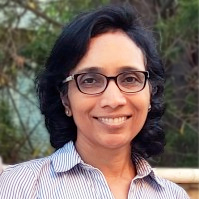
Sharada Yeluri, Senior Director of Engineering, Juniper Networks
Sharada Yeluri is a Senior Director of Engineering at Juniper Networks. She is the project leader for ultra-high density routing chips for routing, switching, and datacenters. A graduate of Arizona State University and The Stanford School of Business, Sharada started her Juniper career 23 years ago as a staff engineer. After which she moved into chip design and has been an integral part of Juniper’s silicon team ever since.

Moderator
Amir Zmora, CEO & Co-founder, flexiWAN
Amir Zmora is CEO & Co-founder of flexiWAN, the world’s first Open Source SD-WAN & SASE. Before starting flexiWAN, Amir was CEO & Co-founder of SwitchRTC, a Real-time, interactive WebRTC based video CDN and B2B/B2C collaboration solution acquired by YouNow. Among his previous positions, Amir was VP Products & Marketing for the Technology Business Unit of RADVISION, an Avaya company.

Sharada Yeluri, Senior Director of Engineering, Juniper Networks

Rahul Aggarwal, Founder & CEO, Augtera

Rajesh Mongia, Associate Vice President, Tata Communications
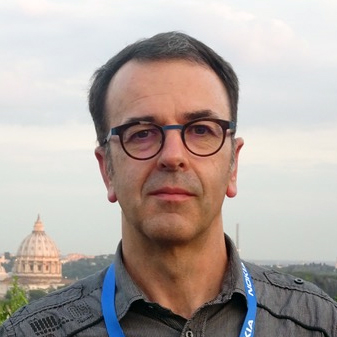
Yannick Chauvel, Network Automation Regional PLM, Nokia
Describing KPN’s architectural framework. Discussing AI examples and projects the teams are working on. Highlighting feasible steps you can take today.

Denice Tuinhof, Senior AI Architect, KPN
Denice Tuinhof received her M.Sc degree in Artificial Intelligence in 2020 and her M.Sc for information science in 2019. She conducted research at Singapore University of Technology & Design and published papers with Hong Kong University and Empirical College London. Currently she works as Senior AI Architect at KPN on the strategy and vision of the company. She also works on the solution architecture of closed loop automation with the support of AI.
Explaining how generative AI opens up possibilities for the creation of interactive virtual environments where control techniques like reinforcement learning (RL) algorithms could be trained and tested, alleviating the risk of unsafe explorations in the real network. Such an RL algorithm, once trained in the digital twin, can be migrated to the real network and deliver optimal performance.

Subhankar Pal, Global Innovation Leader - Intelligent Networks, Cap Gemini

Dave Ward, CTO, Lumen
Delving into the escalating challenge of securing the universal broadband residential edge, a critical frontier in the battle against botnet distributed denial of service (DDoS) attacks. These attacks pose a significant threat not only to other subscribers but also to enterprise customers and external networks.

Jerome Meyer, Security Researcher, Nokia
In his current role, Jérôme drives DDoS security research & competence development at Nokia, as part of its Deepfield portfolio of network security & analytics. Based out of Paris, he joined the company’s Mobile Networks organization in 2005 in Malaysia; and he since covered a variety of sales & pre-sales responsibilities in the Asia-Pacific region, before returning to Europe in 2023. Jérôme graduated with a Master’s degree from the Institut National des Sciences Appliquées in Lyon, France.
Evolving the IP Service Edge with new disruptive networking technologies, including Control and User Plane Separation (CUPS), virtualization and disaggregation, to deliver never before imagined use cases.

Jan Straznicky, Senior Director, Product Line Management, Ciena
Jan Straznicky has over 25 years of experience in networking & telecommunications and is currently the Senior Director of Product Line Management at Ciena. In this role, he leads the team defining Ciena’s IP Networking Software Strategy and product roadmaps for Ciena’s IP Network Operating System (SAOS 10.x), Subscriber Management/BNG (Benu Acquisition) and Enterprise Cloud Edge (Vyatta Acquisition). Ciena’s SAOS 10.x IP Network Operating System runs across the entire portfolio of Routing platforms. Prior to joining Ciena, Jan spent 16 years with Nokia (via Alcatel-Lucent) in various roles spanning Customer Engineering Support, Solutions Engineering and Consulting Engineering. His final role was Senior Director of Consulting Engineer in the IP Business Division responsible for the team driving Technical Business Development for Nokia’s IP products across the North American Mobile Operator segment. Jan’s has spent his career applying the broad concepts of IP networking to build deployable and successful end-to-end solutions for customers. Jan has a B.Eng from Carleton University and an MBA from Queen’s University.
Discussing how an open, declarative, zero touch model accelerates development, and commoditize deployments of a horizontal cloud tailored for a telco’s Multi-Access Edge Compute (MEC) across the vast expanse of Canada, and beyond.

Dan Bernier, Technical Director, Bell Canada
Daniel is a Technical Director at Bell Canada involved in research and development of disruptive technologies transforming the Telco space and Bell Canada’s network and services. He is currently working on the edge cloud strategy and cloud-native transformation leveraging optimized CP/UP separation and advances in network and hardware programming. He is involved in various open source community projects such as FD.io, Network Service Mesh and P4.org. He is also a participating member at the IETF and BBF, co-authoring and collaborating on various drafts for SPRING based service-programming and SFC.
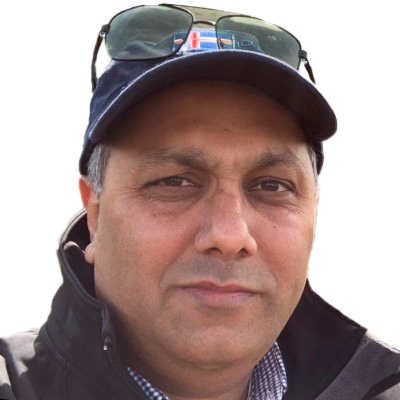
Kashif Islam, Principal Telco Architect, Red Hat
Kashif Islam is a Principal Telecommunication Architect in Red Hat’s consulting organization and help service providers transform their existing mobile infrastructure into next-generation cloud-native 5G networks Kashif is a 20+ year veteran in the IT industry and has architected several complex, large-scale networks for some of the biggest wireline and mobile service providers across the world. He is also an O-RAN alliance contributor and co-authored O-RAN xHaul Packet Switched Architectures and Solutions specification. Kashif has also co-authored a book titled "A Network Architect's Guide to 5G”, which is the first book to cover mobile core, RAN, and transport technology fundamentals and network design details. Kashif is Certified Kubernetes Administrator (CKA) and a double CCIE (#14300) in Data Centers and Routing/Switching Technologies. He holds a Bachelor degree from Sir Syed University (Pakistan), as well as a Master of Engineering in Internetworking degree from Dalhousie University, Canada.
Outlining how business drivers can be addressed and providing examples of priority edge cloud use cases and deployment architectures.

Michael Heffner, General Manager Business Solutions, Adtran
Michael is a seasoned communications technology executive with over 30 years of experience. During this time, he has served in a variety of roles including R&D, Product Management, Product Marketing and Business Unit leadership. Michael has extensive experience defining corporate strategy, business development, market and competitive analysis, pricing strategy, product lifecycle management (including Scaled Agile Framework (SAFe), DevOps and CI/CD methodologies), and new product introduction. Serving in the roles mentioned above, Michael has specialized in several technology domains including cloud/edge compute, mobile communications (4G & 5G), network management, service assurance, and analytics at companies such as Nortel, Motorola, Tektronix, Tekelec, Oracle, ADVA and Adtran.
How to measure quality and effectiveness of intelligence in telecom networks for service assurance and fault management : diving into the effectiveness of AI when compared with human intelligence in mastering the stochastic nature of telecom networks.
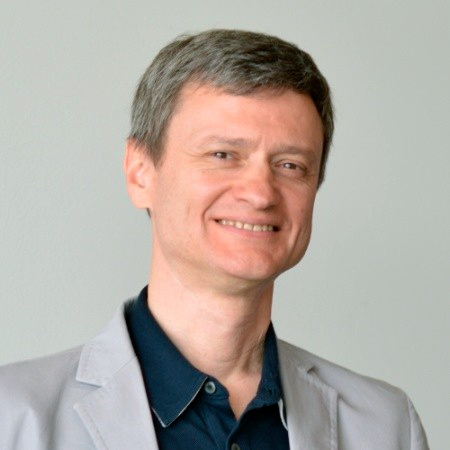
Taras Matselyukh, CEO & Founder, OPT/NET
Dealing with the power of Netconf using a real use case of an ISP: migrating an OLT from one port to another port of another router with all the services. This benchmark of Netconf vs CLI is the occasion to give some feedback on the Netconf interoperability between a Cisco tool and a Nokia Router in an ISP production ecosystem.

Etienne Roux, IP Network Engineer, Orange
Etienne Roux began to work on routers at the GéANT2 NOC, he continued his carrier at Bouygues Telecom and finally came at Orange. He works in the RBCI (AS3215) engineering team since 2011 and is focus on the backhaul and services for ISP and customers. Beside his work at Orange, he is also the deputy mayor of his village in charge of youth, school and library.
Describing the importance of modeling the Digital Map the right way, for the closed loop. Covering the latest development, in the industry and in particular at the IETF.
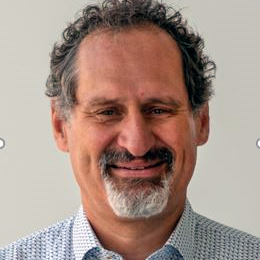
Benoit Claise, Intelligent Operations & Management CTO, Huawei
Data Communication Intelligent Operations & Management CTO at Huawei. Areas of passion & expertise include Internet traffic monitoring, accounting, performance, fault, configuration. Benoit's area of focus network automation with YANG as the data model-driven management enabler, and telemetry as a feedback loop to solve the closed loop automation and the Autonomous Driving Network (ADN) challenges.
Evaluating the relevant protocols (e.g. SNMP, YANG, openconfig, Y.1731, Y.1564, RFC8762, etc) and deployment models (centralized vs distributed, embedded vs. external) in order to identify the most effective way to answer the hard questions of service assurance.

Shelly Cadora, Principal Technical Marketing Engineer, Cisco
Shelly Cadora is a principal engineer at Cisco Systems with over 20 years of experience in enterprise and mass-scale networking. Her expertise spans a wide range of topics, from service assurance and telemetry to network design and programmability. She is an engaging, award-winning speaker who has presented at many industry conferences. In parallel with her networking career, she has earned a Master’s degree in Applied Physics and a PhD in Modern Literature, both from Stanford University.

Christian Schmutzer, Distinguished Engineer, Cisco
Christian Schmutzer is Distinguished Engineer at Cisco Systems and has been with the company since 1998. Early on primarily worked on the design and deployment of large service provider backbones. Since 2013 working on Packet/Optical network architectures, future product definition and technology innovation. Including their standardisation at IETF and deployment with lead customers.
Sustainability is a challenge for us all but for those involved in networking, is it an opportunity or a business burden? In addition to the very visible hand of regulation, we are also exposed to ever more stringent sustainability requirements in new projects.
Discussing what is being done today and what are the more far reaching aspects we are considering.

Neil McRae, Chief Network Strategist, Juniper Networks
Neil McRae is Chief Network Strategist at Juniper Networks. In this company-wide, cross-functional role, Neil focuses on assisting Juniper’s customers, including service providers, cloud providers and enterprises, in developing the next-generation architectures leveraging Juniper’s products and experience-first solutions. Neil joined Juniper from BT where he was previously Chief Architect. While there, he led a significant transformation, as well as leading BT’s 5G launch and mobile strategy. Neil worked with Juniper as a customer and partner for almost twenty years through his tenure at BT, building several global networks using Juniper platforms. Neil is a recognized leader in networking, cloud and digital technologies. Neil has advised several companies on networking, data center, wireless, cloud and security technologies. Neil has also been a speaker on Space Technology with a focus on communications
 Morning Chairman
Morning ChairmanCarsten Rossenhoevel, Managing Director, EANTC
Carsten Rossenhövel is Managing Director and Co-Founder of EANTC AG (European Advanced Networking Test Center). Based in Berlin, Germany, EANTC is a test lab specializing in telecommunication technologies and offers vendor-neutral network testing services for manufacturers, service providers, and enterprise customers. In this role, Carsten has over 20 years of experience in telecommunication networks testing and is responsible for EANTC's business development and marketing. His technical areas of expertise include Network Functions Virtualization and transport network solutions.
Giving an in-depth look at the current state of SRv6, based on a recent global Service Provider survey feedback. Delving into insights on SRv6 architectural preferences expected to be deployed and discussing the role that emerging SRv6 technologies will play in the industry's next phase.
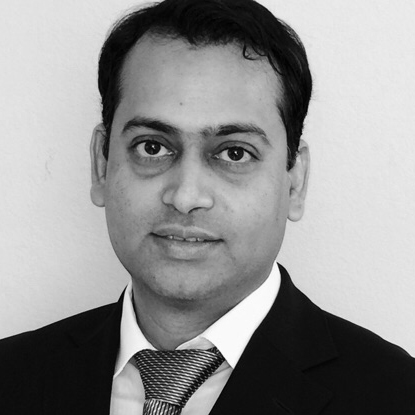
Jahanzeb Baqai, Director, Product Line Management, Ciena
Jahanzeb Baqai is currently the Director of Product Line Management at Ciena. In this role, it is his responsibility to define strategies for IP transport. He also oversees product line management, RSP, and IP transport teams. Before taking on the role as Director of Product Line Management, Jahanzeb was the Director of Strategy and Solutions at Ciena, where he helped identify and define next-generation solutions involving hardware and software products from across Ciena’s portfolio. Jahanzeb holds a Master of Science degree in Computer Science from San Jose State University.
Experiences on implementing the latest SRv6 forwarding features in the ASIC. Covering some of the challenging aspects of the hardware implementation, how SRv6 is different from other transports such as MPLS, the tradeoffs and the implementation choices.
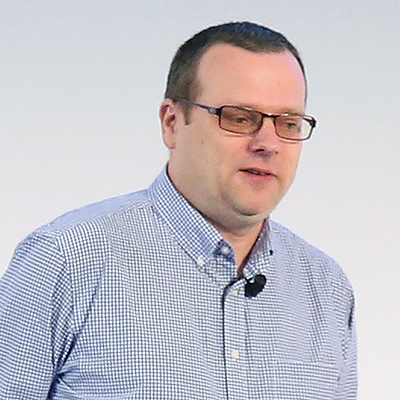
Krzysztof Grzegorz Szarkowicz, Juniper Networks
Krzysztof Grzegorz Szarkowicz is a Solution Architect at Juniper Networks, concentrating on mobile transport solutions, and has been working with the networking industry 20+ years,delivering projects at many operators world-wide. Before joining Juniper Networks in 2007, he worked with Hewlett Packard Labs, Telia Research, Ericsson, and Cisco. During that time he gained valuable hands-on experience at various aspects of networking, culminating in gaining CCIE-SP and JNCIE-SP certifications. He is co-author of the O’Reilly book “MPLS in the SDN Era", by Antonio Sánchez-Monge and Krzysztof Grzegorz Szarkowicz, as well as “Day One: Configuring Segment Routing with Junos” by Julian Lucek and Krzysztof Grzegorz Szarkowicz. At present, he is active contributing member of O-RAN WG9 (Open X-haul Transport) co-authoring WG9's architectural documents.
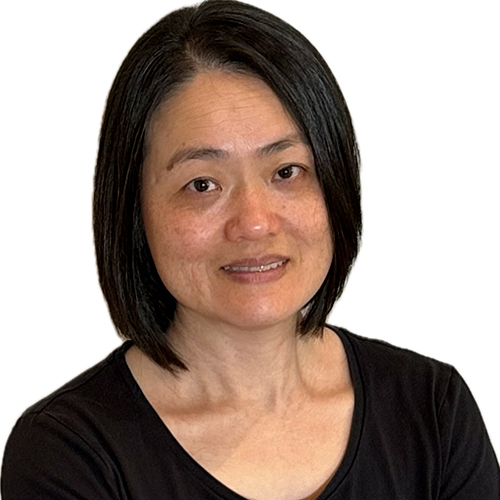
Nancy Shaw, Principal Engineer, Juniper Networks
Nancy has over 20 years of experience developing ASICs for the telecommunications industry. She is currently a distinguished engineer at Juniper Networks involved in architecture for their next generation networking ASIC.
Experiments are being conducted to extend the role of SRv6 to more advanced applications such as TE, 5G slices, load-balancing, and service chaining. Explaining how the introduction of MPLS/SRv6 gateways at strategic locations decouples edge and offers a scalable and controlled introduction of new SRv6 backhaul.

Mustapha Aissaoui, Product Line Manager, IP Networks Division, Nokia
Mustapha Aissaoui is a Product Manager in the Service Router Product Group of the IP Networks Division at Nokia. He holds an Electrical Engineering Diploma from Polytechnic School of Algiers and a MASc in Electrical Engineering from the University of Ottawa. Mustapha Aissaoui has been in the Product Management role since 2004 and is responsible for the MPLS and Segment Routing features in the SR OS based routers. He is also the lead PLM for the SR-OS based PCEP and other SDN features of the NSP PCE controller. Mustapha Aissaoui is an active participant of the IETF MPLS, PCE, and SPRING working groups. He is a co-author and a major contributor to many drafts in these working groups.
Introducing a private network using SRv6 to provide fast service provisioning capabilities. Through network slicing, the private network provides one network and multiple planes to carry different services of different industries, achieving cost-effective, secure isolation, and high-quality differentiated service assurance.

Minwei Jin, Chief Expert of Metro Router Solution, Huawei Technologies
Jin Minwei joined Huawei in 2004, from 2006 to 2016, he was responsible for designing high-level solutions for routers in global carrier networks, from 2017 to 2019, he worked in Huawei Europe Research Center, responsible for solution innovation for European carrier transformation, during this period, he experienced the whole process of global carrier network migration from traditional networks to future networks. He also led the design of the CloudMetro solution and introduced new technologies such as segment routing and telemetry into operators' metro and 5G bearer networks. Since 2019, he has been responsible for researching next-generation technologies and designing product solutions for Huawei routers.
Exploring in detail the Cloud RAN Anyhaul design and specifically fronthaul design with segment routing technology. Discussing the needed technologies to allow building a single true multi-service and multi-slice fronthaul which can be used to transport latency-sensitive fronthaul traffic and other non-latency-critical applications.

Paul Meyers, Senior Product Line Manager, Nokia
Paul Meyers is Senior Product Manager within Nokia's (and previously Alcatel and Alcatel-Lucent's) IP Division since 2005, focussing the last years on Mobile Anyhaul and 5G. Before joining this team, he was active within Alcatel for several years (starting from 1994) as Supply Chain project engineer looking into advanced planning systems and reverse logistics and from 2000 on as Marketing Manager and Business Consultant for data products (ATM & IP). Paul holds an MSc in Electrical Engineering from the University of Louvain (KUL) and a Masters degree in Economics.
SRv6 has been standardized in IETF, and has been deploying in many networks around the world. Introducing China Mobile implementation of SRv6 with Compression, and the record-speed global SRv6 hyperscale Deployment.
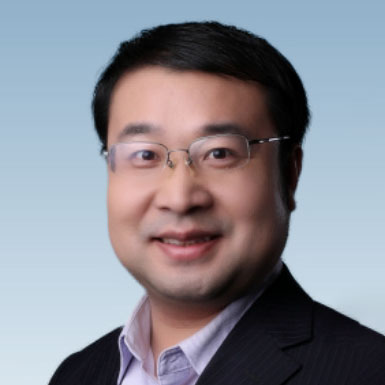
Weiqiang Cheng, Chief Architect of IP Network, China Mobile Research Institute
Cheng Weiqiang has nearly 20 years of experience in IP network research and development. He is currently mainly responsible for the technical research, standardization, and deployment planning of IP wide area networks and data center networks.
The current PCEP and BGP-SR TE APIs need the controller to implement protocol stacks and the associated laborious encoding, decoding, and serialization. Explaining how the gRPC APIs make programming SR policies easier for the applications.

Alex Bogdanov, Distinguished Engineer & Principal Architect, BT Group
Demonstrating how Mobile User Plane (MUP) architecture enables operator's SRv6 networks to integrate 5G user plane and IP transport for E2E network slicing and edge computing.

Satoru Matsushima, Softbank
Describing an ISP full IPv6 backbone with SRv6 Technologies and a full interoperability with other brand (ISISv6 and SRv6 BE and or now SRv6 TE).
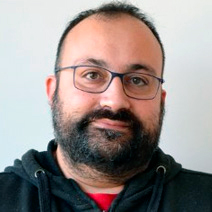
Riccardo Burrai, CTO, Sirius
Passionate about technology since he was a child, in 1997, while still a student, together with his mathematics and philosophy professors and some classmates, he created a state-of-the-art computer room, with one of the first high-speed lines, a CDN 256 run directly from primary Telco Room by SIP (Now Telecom Italia), and sets up a data processing center with web and mail server. After high school, he enrolled in the degree course in Telecommunications Engineering in Florence. Riccardo's dream has always been to create an open, scalable, secure and shareable network; in fact Riccardo in the first years of university, to amortize the high costs of the first ADSL lines, shared the network with the neighbours. During his university studies, he meets Simone and coincidentally Simone, in Quarrata (a little city near Florence), shares the connection with his friends; it is precisely this coincidence that prompts them to transform, together, a passion into business (hence the "noi" translated into English in US which closes the name Si (Simone) Ri (Riccardo) US). In 2007 they founded Sirius Technology in Simone's garage in Quarrata and began to create the Toscana radio network. Since 2016 they have also extended coverage in Sardinia starting from the "Nugoro amada", Riccardo's birthplace, creating a new generation radio and fiber network in Sardinia. Using artificial intelligence and IOT sensor technologies aided by new generation protocols on IPv6, they have built an intelligent infrastructure capable of predicting, with the trend of the perturbation, the degradation of the links or the saturation of the radio and fiber optic links and anticipate the traffic engineering, conveying the priority traffic on privileged segments through the use of the SRv6 protocol. Not only WiFi, Sirius has a business unit for the design of fiber access networks and has started to wire entire industrial areas and towns in both Sardinia and Tuscany.
Challenging the hype-driven rush towards 6G and looking at the journey and value 5G still has to deliver. Questioning the need for another rapid generational and costly upgrade cycle rather than continued incremental releases that cost efficiently unlock real business, market and customer value.

Stephen Douglas, Head of Market Strategy, Spirent, Working Group Advisory Member, UKTIN
Stephen heads Spirent’s market strategy organization developing strategy, helping to define market positioning, future growth opportunities, new innovative solutions and market leading disruptive technologies. Stephen also leads Spirent’s strategic initiatives for 5G and future networks and represents Spirent on a number of Industry and Government advisory boards. With over 24 years’ experience in telecommunications Stephen has been at the cutting edge of next generation technologies and has worked across the industry with service providers, network equipment manufacturers and start-ups, helping them drive innovation and transformation. Stephen is an ardent believer in connected technology and strives to challenge, blur and break down the silos which prevent innovation and business success.
Focusing on the requirements and features of 5.5G bearer networks. Discussing the evolution trend of bearer network technologies from the aspects of green ultra-broadband, ubiquitous access, multi-service converged bearing, new service experience assurance, high reliability and high precision ground time synchronization and low-open intelligent O&M.

Xu Huan, VP of Data Communication Product Line Router Domain, Huawei
Xu Huan joined Huawei in 2005 and has more than 18 years of experience in the IP field. Served as the European IP Solution Sales Director from 2013 to 2022. With comprehensive and in-depth understanding of IP technologies, as a software engineer, R&D project manager, senior product manager, head of the router product portfolio and lifecycle management team etc.
Overview of Ethernet xhaul transport architecture and deployment scenarios.
Key requirements and challenges.
Areas of validation focuses (bounded latency, synchronization, real-world condition, slicing, etc.) and test methodology.
Plugfest observation and learning, suggested best practice.

Speaker from Keysight
Describing the PRTC-B ITU-T specifications which have become imperative to address the exacting demands of precise synchronization in the context of 5G-Advanced and the prospective use-cases envisioned for further technologies such as 6G.
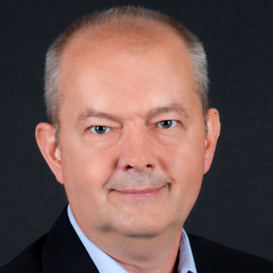
Dennis Hagarty, Principal Technical Marketing Engineer, Data Center and Provider Connectivity Group, Cisco
Dennis Hagarty is an experienced specialist working in the mobile space for 30 years and for the last 14 years has focused on timing and synchronization. In his current role, Dennis is the interface between Cisco engineering, field sales teams, and the Cisco customer community for all matters related to timing and synchronization for Provider Connectivity business unit and other Cisco entities. He also closely follows standards bodies such as the synchronization group at the ITU-T (Q13/SG15) and is also the lead author of the first available major book on the topic: "Synchronizing 5G Mobile Networks" (Cisco Press). Dennis has a skill for breaking down complex topics to help people understand and gain knowledge, he loves to share his knowledge to help others.
Making it easy to see what’s going on: operating and troubleshooting workflows for typical mobile transport sync/timing distribution trees including such features as G.8275.1/.2 profile interworking APTS and multi-grandmaster resilience.

Robert Friskney, Director of Product Line Management, Ciena
Robert is the L3 and Advanced IP Apps PLM for Ciena’s SDN controller & NMS/EMS, Navigator Network Control Suite (formerly known as MCP). Robert joined Ciena via the Nortel MEN acquisition in 2009. From graduation, he started working in fixed line copper access technologies, SIP VoIP and MPLS before changing to photonic networking for his academic research work. Going back into IP/Ethernet to co-invent PBB-TE (802.1Qay), he was then a prime in the network management solution for this technology and eventually all IP/Ethernet. He shifted to a broader architecture role shaping Ciena’s IP/Optical convergence before handing that off to production, and spent some years directing the company’s 5G mobile solution before returning to the management space for his current role. Robert holds twenty four patents, an MA in Computer Science from the University of Cambridge, UK and an MSc in Telecommunications and EngD in Photonic control planes, both from the University of London, UK.
Defining how and why FRMCS will replace GSM-R in one giant leap from 2G to 5G SA, and why this needs a service aware IP Optical network and advanced solutions for fronthaul, backhaul, timing and virtualization to deliver what is a first large-scale, mission-critical, and interoperable implementation of Standalone (SA) 5G.
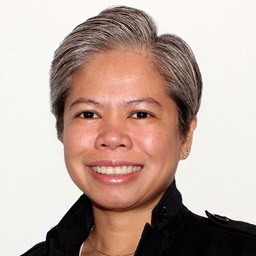
Elea Siegele, Solution Consultant, Ribbon
Providing an overview of ETSI Software Development Groups, their role in supporting standardization, how they operate, the software they develop, and how to create a new SDG.

Silvia Almagia, Director of Software and Standards, ETSI
Silvia is Director of Software and Standards at ETSI, where she is responsible for Software Development Groups and open source initiatives in support of standardization. Among others, she has helped setup projects such as Open Source MANO, TeraFlowSDN, OpenSlice and OpenCAPIF. Before that, she was Technical Expert in the ETSI Centre for Testing and Interoperability where she provided technical expertise on open source, interoperability testing and proofs of concept (PoC) to standardization groups working on network transformation (NFV, MEC, ZSM). Prior to this position, Silvia was Lead Member of the Technical Staff at Ulticom, where she was responsible for the design and development of software based carrier grade solutions enabling mobile services. Before that, she worked in the domain of Operations Support Systems (OSS) and Network Management for HP and Thales.
Explaining the power of SDN with controller based intelligent path calculation along with programmable network devices and using an implementation of such controller. The benefits are explored that result from newer fine grained Transport services leveraging SR-MPLS, SRv6 and pervasive Traffic engineering as well as innovations such as SR IGP Flexalgo and SR Circuit Style services.
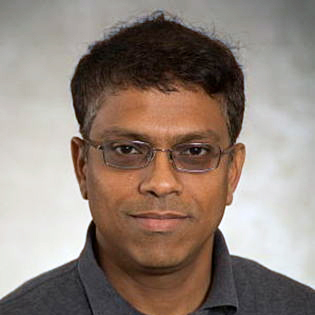
Krishnan Thirukonda, Principal Engineer, Cisco
Krishnan Thirukonda is a Principal Engineer with Cisco Systems currently focusing on Large Scale network automation and analytics technologies. Krishnan has extensive background in network automation, and is a networking veteran with previous experience in routing, mpls and IPv6 technologies as well as Cisco data center and virtualization solutions.
Introducing the overall architecture of IPv6 network slicing, the key technologies and extensions in different network planes, and the latest progress in standardization. Detailing experiences on IPv6 network slice deployments in different industries.
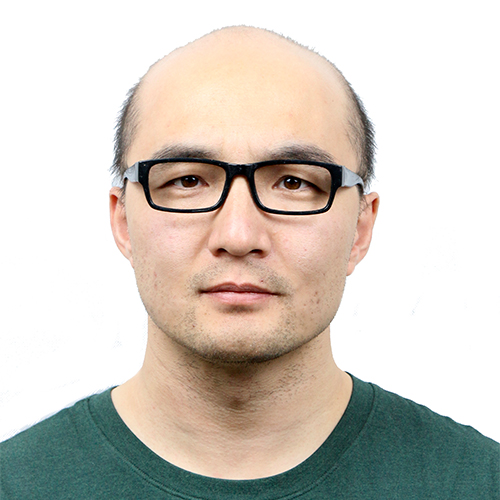
Jie Dong, Senior IP Standards Representative, Huawei
He has 16+ years' experience in network design, research and standards. His specialty is in Routing, MPLS/VPN, SDN and Segment Routing, etc. He is now the secretary of IETF IDR working group. He has 12 published RFCs and many in-progress IETF drafts. He also has 80+ patents in packet networking.
Bit Index Explicit Replication (BIER) is a new multicast technology that allows efficient replication without incurring per-flow/tunnel state on the transit nodes. Focusing on how BIER works, its architecture, IETF status and industry readiness.
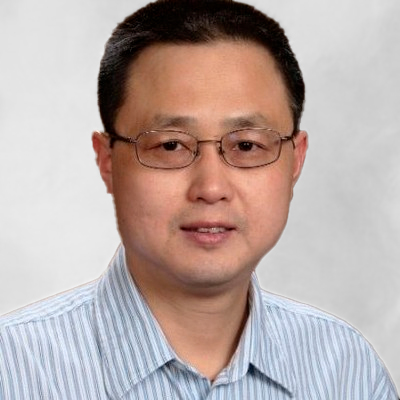
Jeffrey (Zhaohui) Zhang, Distinguished Engineer, Juniper Networks
Jeffrey (Zhaohui) Zhang is a Distinguished Engineer in Juniper Networks' routing protocols team. He has worked on routing technologies for over 30 years, from OSPF/BGP/LDP/RSVP, MPLS-TE, MPLS/BGP-enabled services, to Multicast (PIM/MVPN/EVPN), VPLS/EVPN, RIFT, Segment Routing, and Mobile User Plane. Jeffrey Zhang is an active IETF participant who co-chairs the RIFT and BESS WGs in the IETF.
* 不測の事態により、事前の予告なしにプログラムが変更される場合があります。





